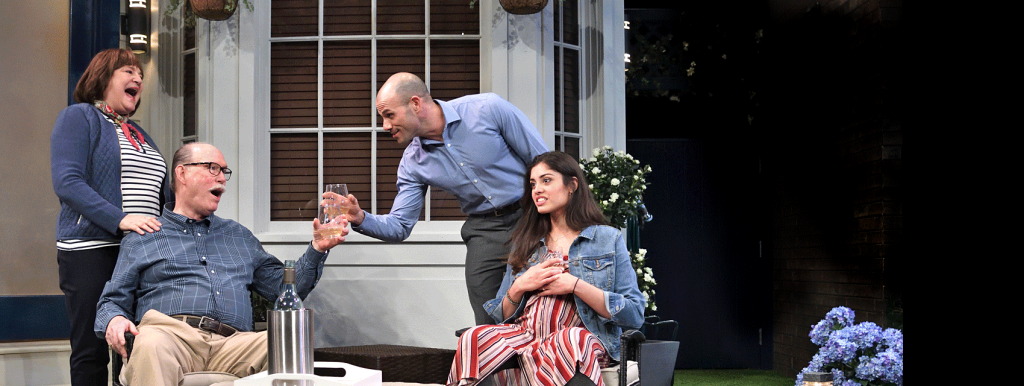How do you prepare the set for a show that changes location nearly every other scene? Instead of creating multiple sets, The Inheritance team decided to opt for a set that was conceptual and malleable.
Enter, the box.
The Inheritance set designer, Michael McGarty, is a Trinity Rep veteran, having designed over 50 sets for the theater over the span of 40 years. He is also the theater’s scene shop director, leading a team of carpenters in constructing sets for every show produced, even the ones he doesn’t design.
“We came up with the notion of this off-white, 66-foot-long box, sort of like a Joseph Cornell diagram,” McGarty said of The Inheritance set. “The box was created to be both modern and old world. It is structural but also flexible so we can focus on the ways the actors bring the show to life onstage.”
Director Joe Wilson, Jr. reiterated how important it was for the minimalist look to invoke duality.
“It makes me think of a New York City apartment but also makes me think of a house in upstate New York,” Joe said. “It needed to be something that transitions between the two worlds, but could also be a variety of other places like a bathhouse in Prague or a beach party on Fire Island.”
When designing a show’s set, the first step is a conversation between the director and set designer regarding the overall vision of the production. The set designer then submits a rough sketch of a set concept about two to four months before building is scheduled to begin. These concepts are refined over time through input from the director, as well as the theater’s charge scenic artist Taylor Kmetz, who is responsible for budgeting and logistical challenges. The final set is generally complete a few weeks before on-stage blocking begins.
The scene shop also works closely with Trinity Rep’s prop shop. Regardless of a scene’s location, the same mid-century-style furniture pieces will remain on stage, and it is part of the prop shop’s job to provide those pieces. There will also be other small details that will be left up for audience interpretation. For example, a quilt overlaid on a chair that, depending on the scene’s context, could serve as a quilt from Eric’s grandmother, or a piece of the iconic AIDS quilt.
Sets tend to change a lot throughout the design process, McGarty explained. Despite this, not all concepts from the cutting room floor were completely lost.
“Early on, Joe pitched building an 18th-century house, since Walter owns this house in upstate New York” McGarty said. “These houses tend to be small with low ceilings, smaller doors and windows, made with local materials like pine and oak. The whole house didn’t become the final set, but the idea was always in the back of my mind in terms of how we are going to present Walter’s home. Without giving it away: For Walter, and eventually Eric, how we incorporated these details into the house is very effective in symbolizing who they are as human beings.
